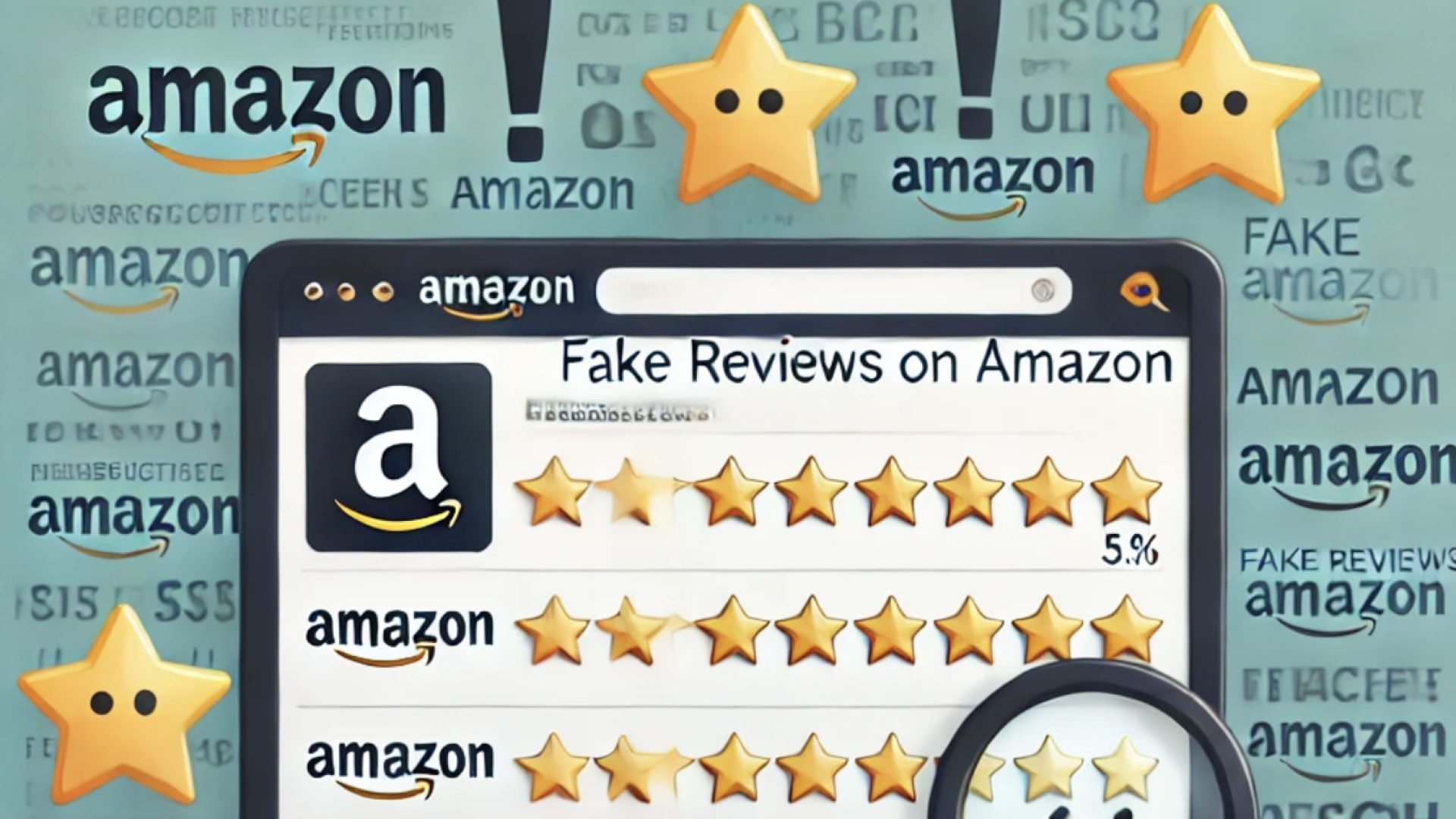In the world of eCommerce, reviews play a large role in shaping buyers’ decisions. On Amazon, they can make or break your success. Unfortunately, the platform is also plagued by fake reviews—either overly glowing endorsements or unfairly critical feedback designed to manipulate product rankings or sabotage competitors.
As a seller, understanding how to identify and deal with fake reviews is essential to protecting your brand and maintaining credibility. In this guide, we’ll cover the types of fake reviews, how to spot them, and actionable strategies to mitigate their impact.
Why Fake Reviews Are a Problem for Sellers
1. Distorted Customer Perceptions
Fake positive reviews can artificially inflate expectations, leading to higher return rates and negative experiences when products don’t live up to the hype. Conversely, fake negative reviews can drive potential customers away, even if the product is high quality.
2. Impact on Product Rankings
Amazon’s algorithm heavily factors in customer reviews when ranking products. Fake reviews, whether positive or negative, can skew rankings unfairly, either helping competitors or harming honest sellers.
3. Legal and Ethical Risks
Engaging in fake review schemes—intentionally or unintentionally—can lead to penalties, including account suspension and reputational damage.
Types of Fake Reviews on Amazon
Understanding the different types of fake reviews is the first step toward combating them.
- Positive Fake Reviews
- Written to inflate ratings artificially.
- Often feature generic language like “This is the best product I’ve ever used!”
- May come from fake accounts or incentivized customers.
- Negative Fake Reviews
- Posted by competitors or disgruntled parties to lower a product’s overall rating.
- Tend to focus on exaggerated flaws or complaints that don’t align with other customer feedback.
- Manipulative Reviews
- Reviews that demand refunds or free products in exchange for removing negative feedback.
- Often include threats or emotionally charged language.
How to Spot Fake Reviews
1. Look for Generic or Repetitive Language
Fake reviews often contain vague or overly enthusiastic statements that lack specific details about the product. Watch for phrases like:
- “Amazing product!”
- “Totally worth it!”
- “Don’t buy this—worst product ever!”
2. Examine Reviewer Patterns
Click on the reviewer’s profile to see their activity:
- Multiple reviews for unrelated products in a short time frame can indicate a fake account.
- Reviews that repeat the same wording across different products are suspicious.
3. Check for Verified Purchases
Amazon tags reviews from actual buyers with a “Verified Purchase” badge. While not foolproof, reviews without this badge are more likely to be fake.
4. Analyze Review Timing
An influx of reviews in a short period, especially immediately after launch, can signal a coordinated fake review campaign.
5. Investigate Reviewer History
Fake reviewers often have profiles with:
- Few or no details.
- Unverified or generic profile pictures.
- Review histories full of 5-star or 1-star reviews.
How to Deal with Fake Reviews
1. Report Suspicious Reviews to Amazon
Amazon provides tools to report fake reviews:
- Go to the review in question and click “Report Abuse.”
- Provide detailed information, such as why you believe the review is fake.
2. Respond to Negative Reviews Professionally
If you suspect a fake review but it hasn’t been removed, respond calmly and professionally:
- Acknowledge the reviewer’s concerns.
- Politely mention that the feedback doesn’t match your product’s usual quality.
- Invite the reviewer to contact your support team for resolution.
Example:
“Thank you for your feedback. We’re sorry to hear about your experience and are committed to resolving any issues. Please contact us directly so we can assist you further.”
3. Monitor Your Listings Regularly
Set up alerts or use tools like Helium 10 or Jungle Scout to track reviews and flag suspicious activity.
4. Focus on Genuine Reviews
Encourage satisfied customers to leave honest reviews. Strategies include:
- Adding a follow-up email to your order process with a polite review request.
- Including a note in your packaging asking for feedback.
5. Use Amazon’s Brand Registry
Enrolling in Amazon’s Brand Registry offers advanced tools to monitor and protect your listings. This can help you address fake reviews more effectively.
6. Collaborate with Amazon Support
If a pattern of fake reviews persists, escalate the issue by contacting Amazon Seller Support. Provide evidence, such as screenshots, order IDs, and links to questionable profiles.
Tools to Help Identify and Manage Fake Reviews
- Fakespot
- Analyzes the authenticity of reviews on product listings.
- ReviewMeta
- Provides an adjusted review score based on the likelihood of authenticity.
- Helium 10
- Tracks suspicious activity and offers alerts for review changes.
Preventative Measures to Avoid Fake Reviews on Your Products
1. Work with Trusted Partners
When using influencers or third-party agencies, ensure they adhere to Amazon’s guidelines and avoid incentivized reviews.
2. Avoid Manipulative Review Practices
Never offer compensation or free products in exchange for reviews. This violates Amazon’s policies and risks account suspension.
3. Build a Strong Brand Reputation
A strong reputation and loyal customer base can help counteract the impact of fake reviews. Focus on delivering high-quality products and excellent customer service.
FAQs
1. Can Amazon remove fake reviews?
Yes, Amazon has systems in place to detect and remove fake reviews. Sellers can also report reviews directly for investigation.
2. Are all unverified reviews fake?
Not necessarily. Some customers may leave genuine reviews without purchasing directly on Amazon, but unverified reviews are more likely to be fake.
3. How long does it take for Amazon to act on reported reviews?
It can take anywhere from a few days to several weeks for Amazon to investigate and remove fake reviews. Persistence and detailed reporting can expedite the process.
Conclusion
Fake reviews are a significant challenge for Amazon sellers, but with the right strategies, you can protect your brand and maintain customer trust. By identifying suspicious patterns, using tools to monitor activity, and focusing on genuine customer engagement, you can navigate the issue effectively and build a reputable presence on Amazon.
Looking to improve your Amazon strategy? Contact Elite Automation to optimize your listings, improve your review management, and boost your sales with tailored e-commerce solutions. Let us help you thrive in the competitive Amazon marketplace!


